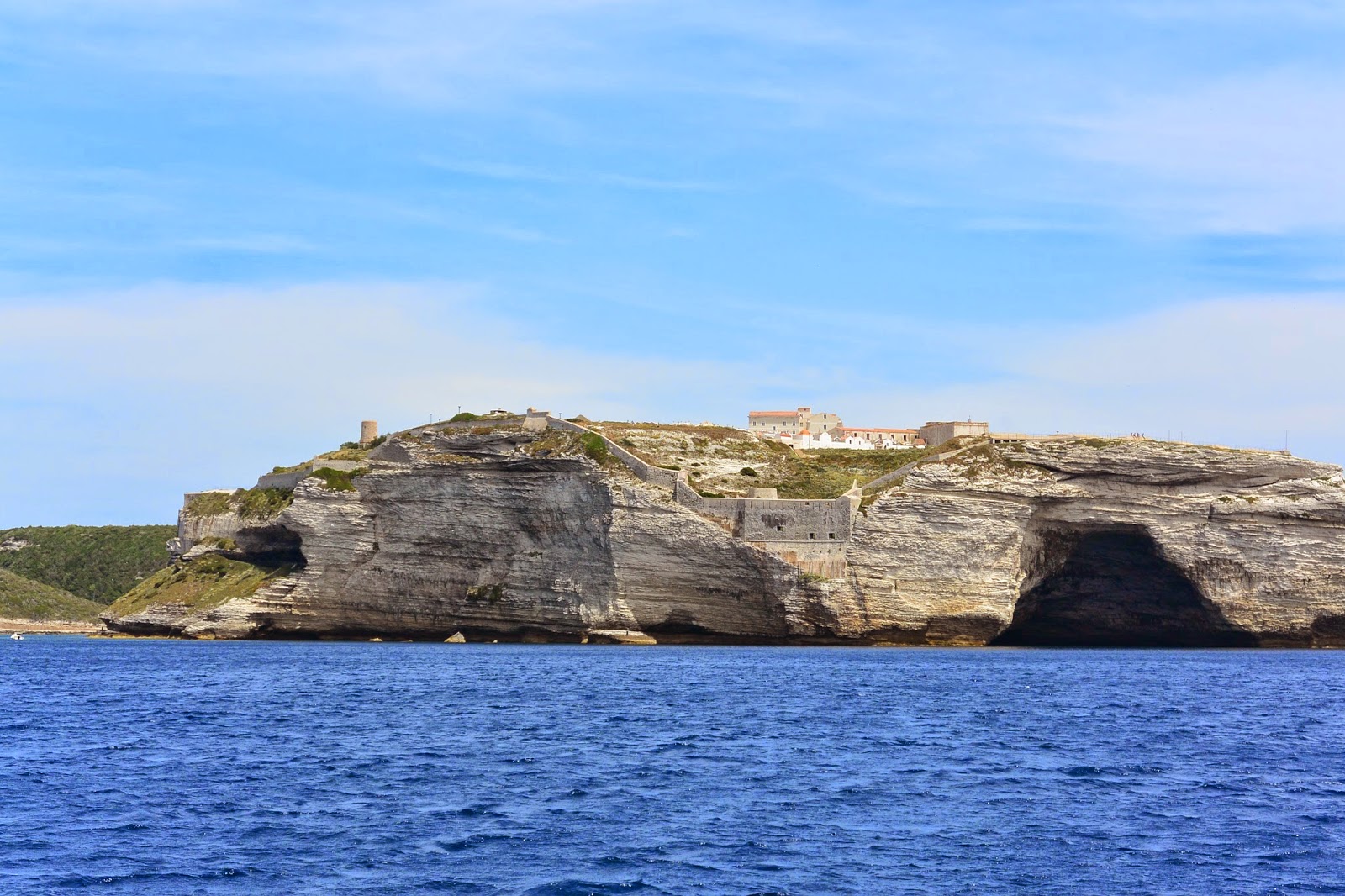We caught a bus back to Ajaccio Ajaccio Ajaccio
Near
the home that Napoleon Bonaparte was born in
We finally managed to get a bus back to
Bonifacio. The bus winds through hilltop villages which
all seem to have been built with defence in mind. Many of the old parts of the villages were
walled and some had brooding castles overlooking the valley below. Life would have been very hard in this part
of the world a few centuries ago and even at the beginning of the 19th
century there were many bandits in Corsica .
The coastline is also dotted with Genoese watch towers which were built to warn
of approaching corsairs raiding from Africa !
The flag of Corsica (& Sardinia ) actually
have the black heads of the corsair captains who were caught, beheaded and
their heads taken back in the flag. Gruesome, but it makes a great flag and
since there are no longer any Corsairs, the warning has worked!
Bonifacio at night
Artemis V in Bonifacio Harbour
Bonifacio
town on overhanging cliffs
From Bonifacio, we went to Iles
Lavezzi. These rocky outcrops have been
declared a heritage listed national park.
We anchored in a bay with crystal clear water. It is so clear that you can select exactly
which patch of sand to put the anchor on. There were lots of fish there, a
delight to see in the Mediterranean . On the island are approximately 600 graves
and a little chapel. On the way to the Crimean War, a ship floundered there and
all lives were lost. Only one person witnessed the tragedy, a leper living on
his own on the island. The bodies were so mangled when they were pulled from
the sea that only one person could be identified. All the other graves are unmarked.
Cemetry
on Ile Lavezzi
From Iles Lavezzi we crossed the Bonifacio Strait France and Italy
Crossing
the Bonifacio Strait
from France to Italy
The little town of La Maddalena
Port
of the town of La Maddalena
For the last two days we have been anchored
in Porto Luscia Bay Bonifacio
Strait
Porto Luscia Bay






















